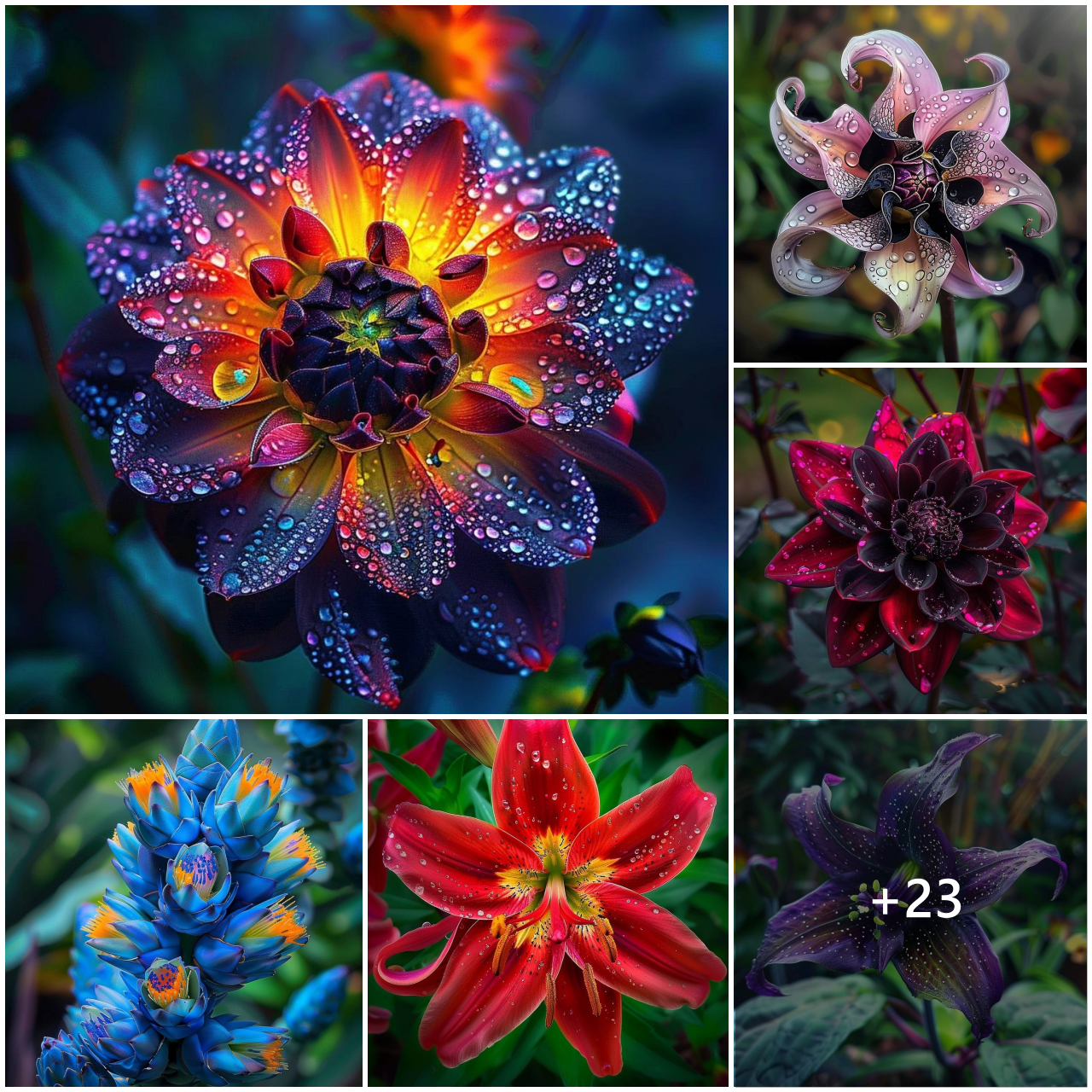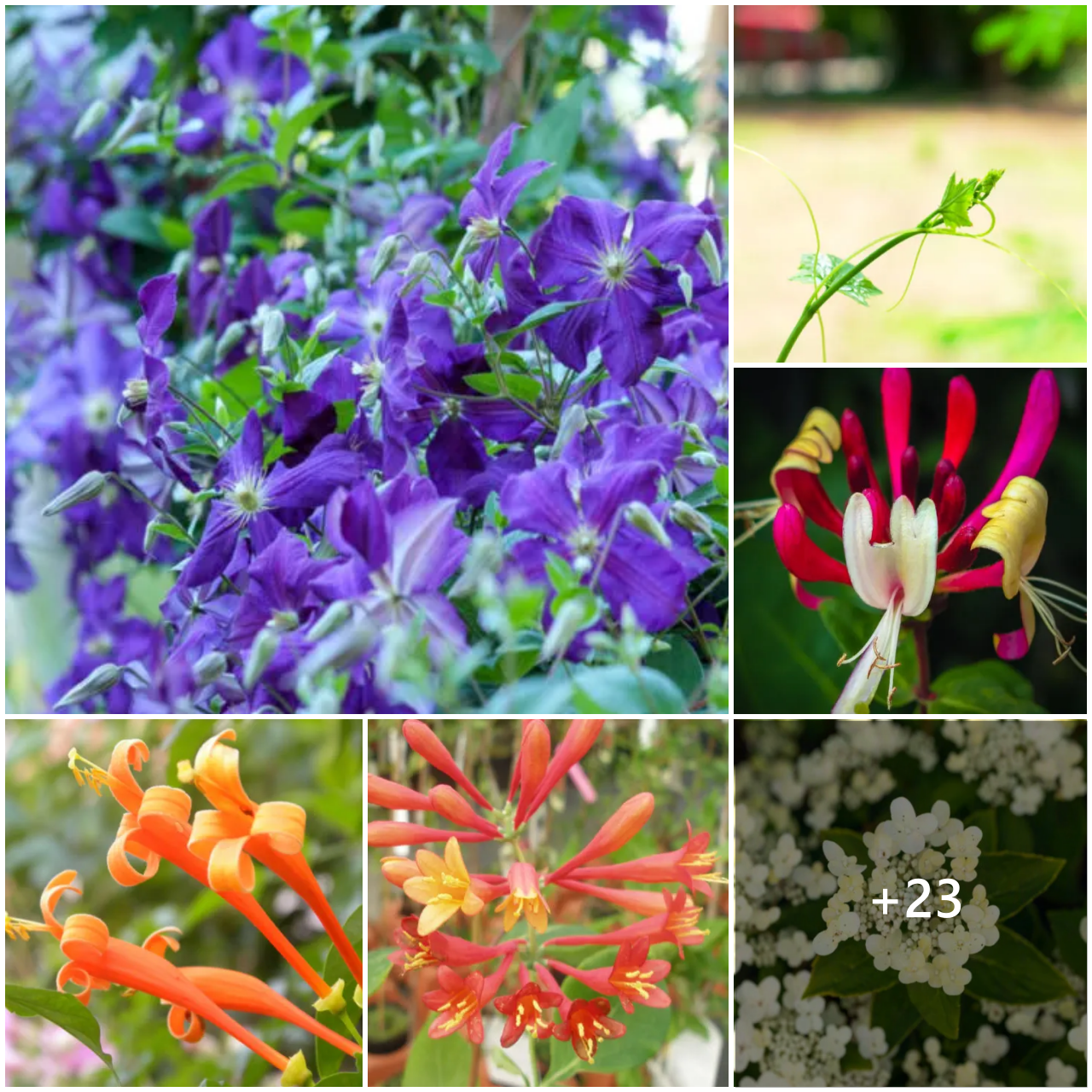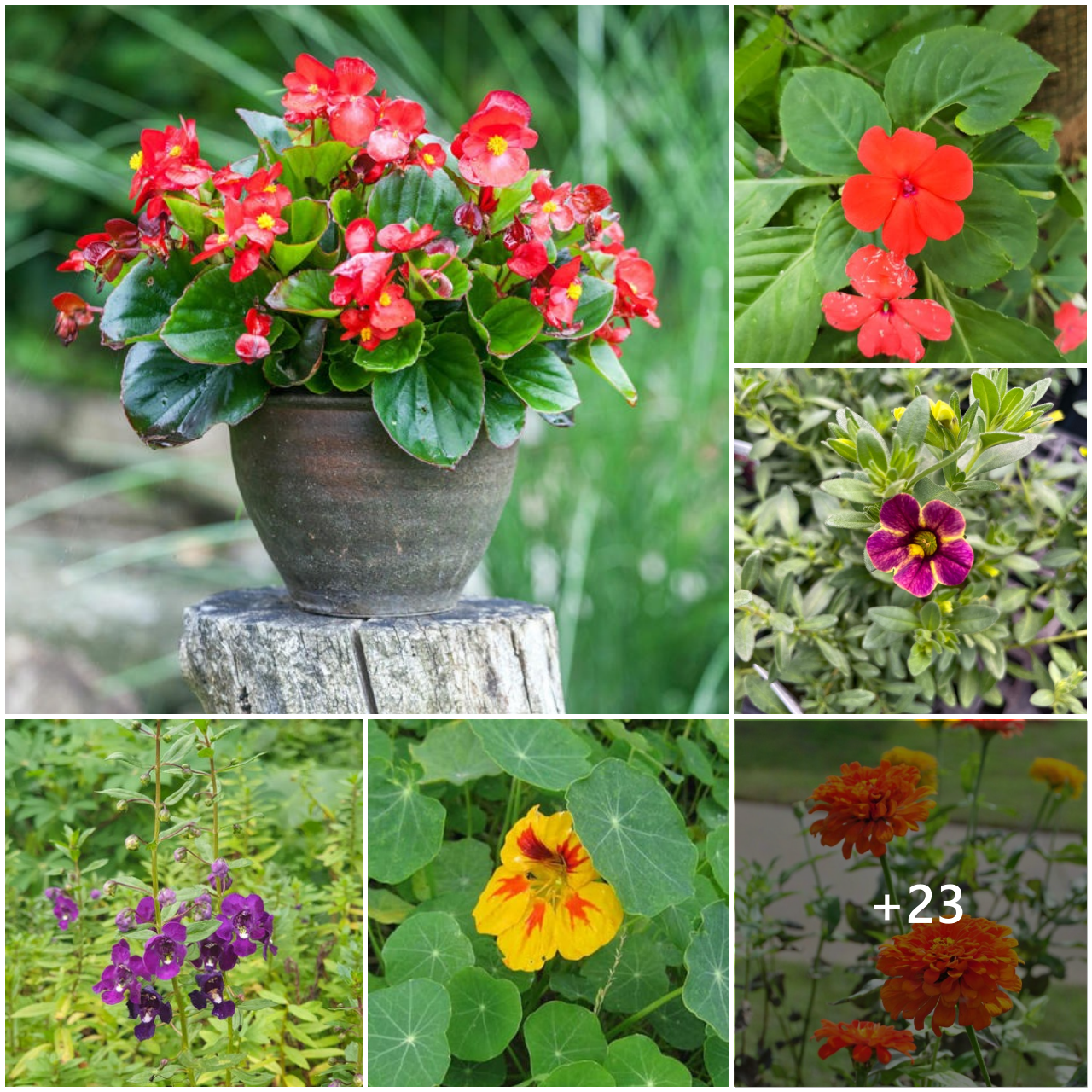The right plants can transform a boring fence line into a garden showcase.
Some plants are meant to grow scrambling along a fence line, poking their heads through the wooden slats. Likewise, certain fence styles are made to be draped in flowers. It is hard to picture a white picket fence, for example, that is not swimming in blooms. Whether you are trying to camouflage a chain-link fence, dress up a solid wall of wood, or make use of vertical space, we’ve rounded up some of the best plants for a fence line.
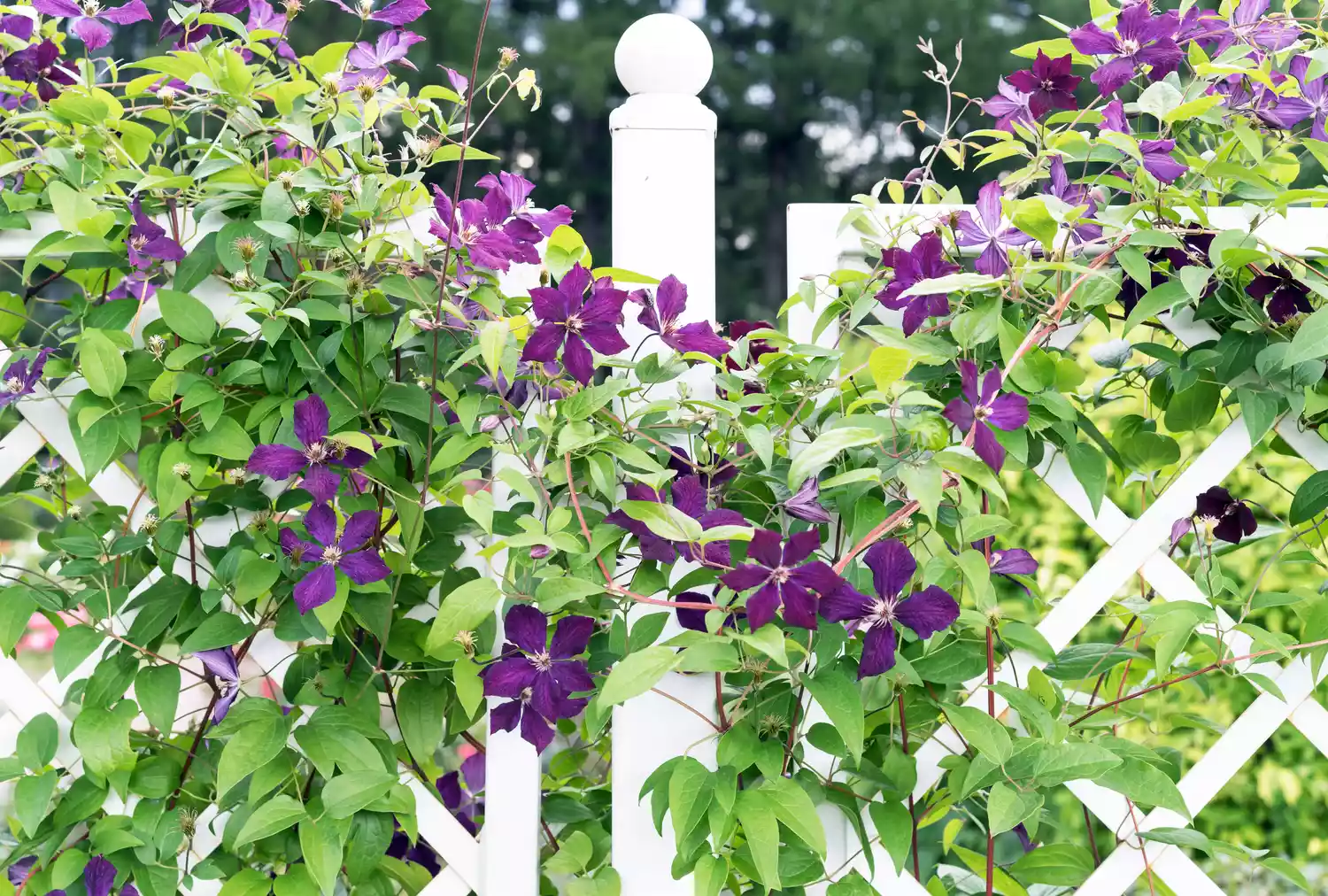
The style and height of a fence will dictate plant selection to some extent. Picket, split-rail, and other open-style fences lend themselves to flowering annual and perennials, as well as billowing shrubs, whose flowers move in and through the fence line. These fence styles tend to function as an integral part of the planting. Our goals differ significantly when planting along a solid fence, which can be visually dominant. Mixed plantings of shrubs, ornamental grasses, and perennials work to soften the fence line and dress up an otherwise blank surface. The following list includes plants for a range of fence styles and design goals.
Climbing Rose
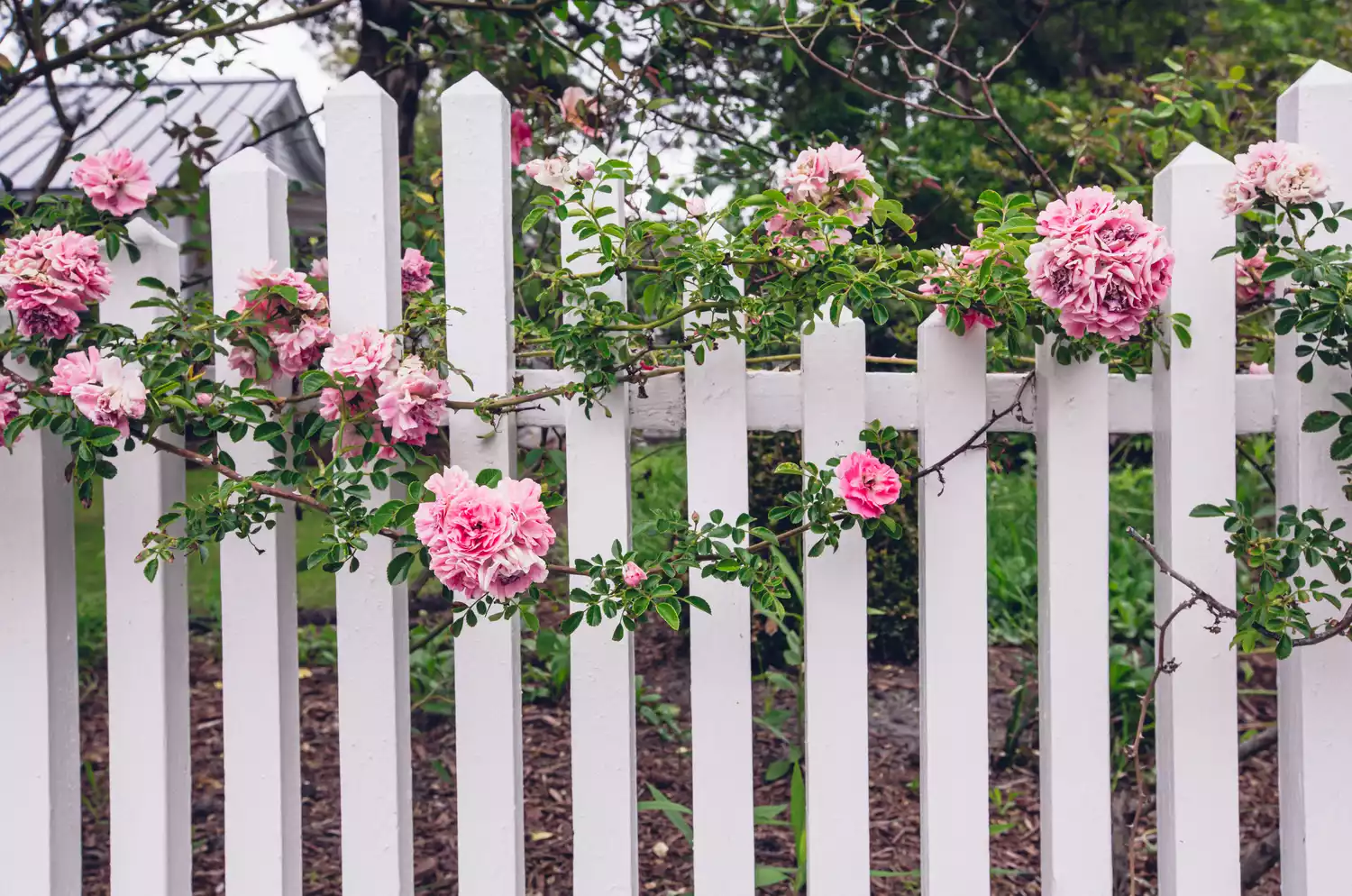
- Botanical Name: Rosa hybrids
- Sun Exposure: Full Sun
- Soil Type: Moist, Well-draining, Rich
- Soil pH: Slightly Acidic to Neutral (6.0-7.0)
Climbing roses add romance and fragrance to any garden. Roses don’t really climb in the way that morning glory or peas climb. Varieties considered to be climbers produce very long canes or stems, which are easily trained to a fence or other structure. As such, climbing roses will need to be secured to the fence with ties.
Mophead Hydrangea
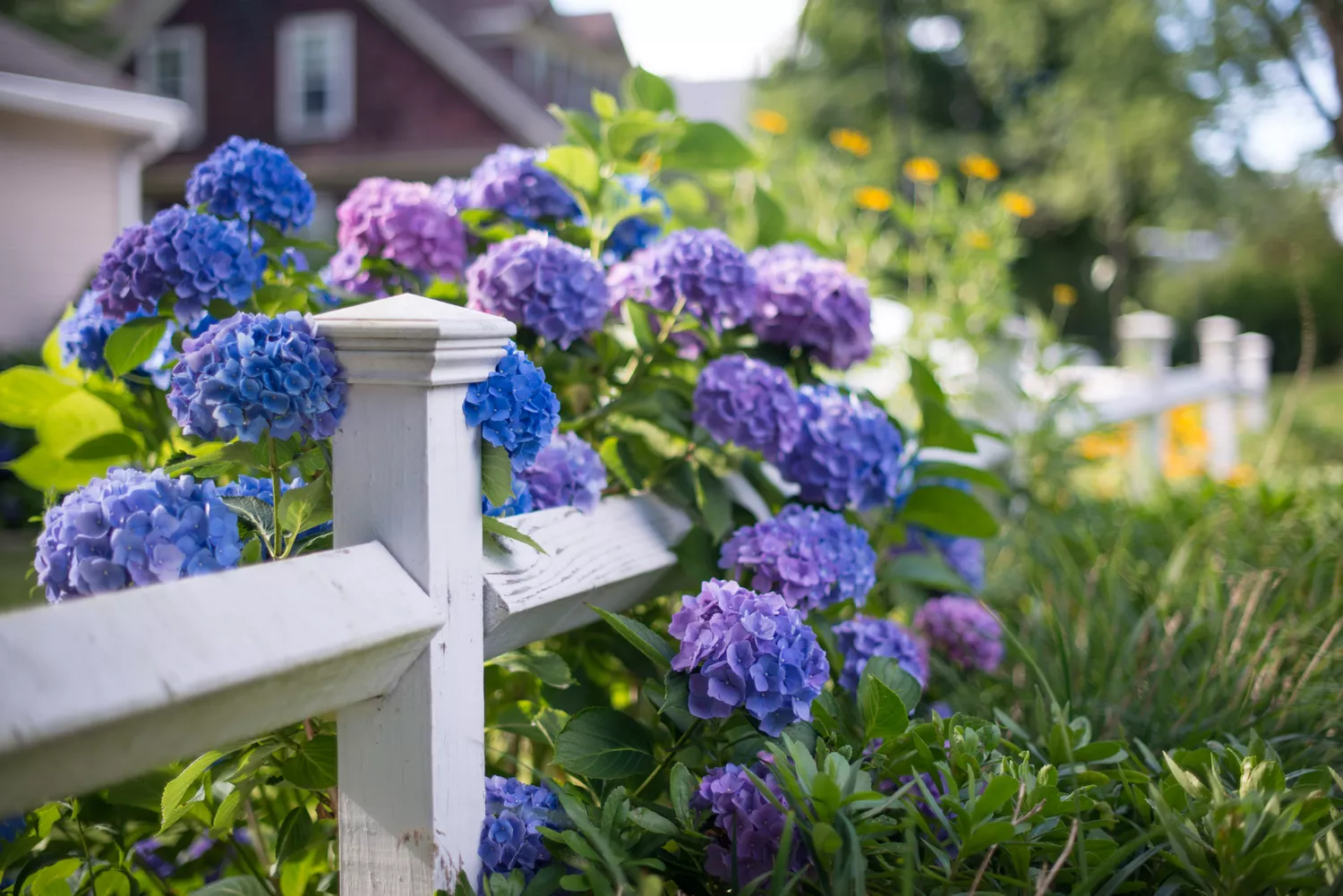
- Botanical Name: Hydrangea macrophylla
- Sun Exposure: Partial to Full Shade
- Soil Type: Moist, Well-draining, Rich
- Soil pH: Acidic to Slightly Acidic (5.0-6.5)
The buoyant blooms of mophead hydrangea are magical poking through the rails of a fence. Flower color varies according to variety and soil pH. For blue blooms, maintain a soil pH between 5.0 and 5.5. Above that level, blooms will take on purple or pink hues.
Holly
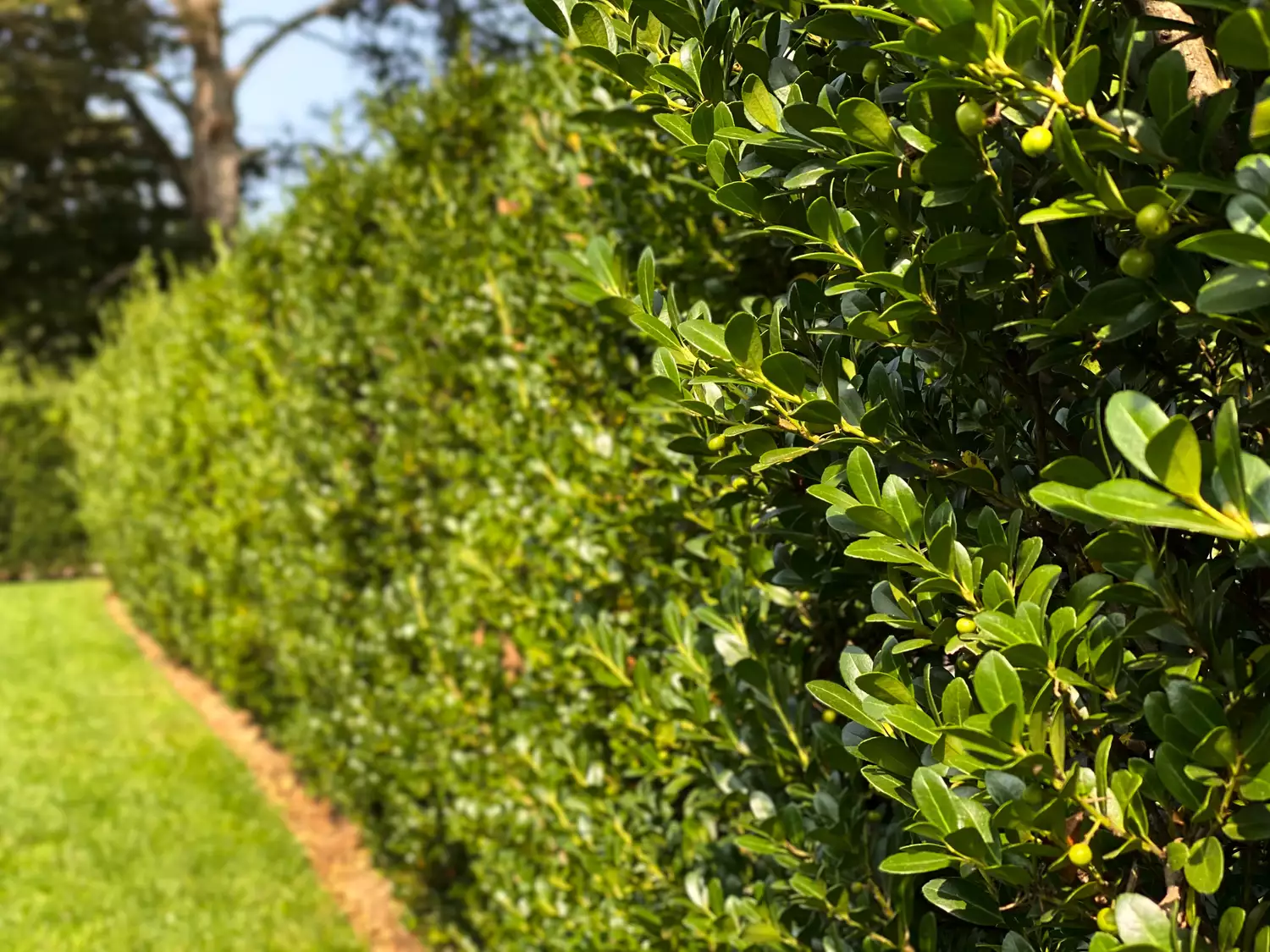
- Botanical Name: Ilex species
- Sun Exposure: Full Sun to Part Shade
- Soil Type: Well-draining, Rich
- Soil pH: Acidic (5.0-6.0)
Break up the monotony of long solid fences with the evergreen foliage of hollies. Given the wide variety of species available in everything from small, rounded bushes to large pyramidal trees, there is a holly for every garden size and style. Red berries provide added beauty in winter and attract songbirds.
Hollyhocks
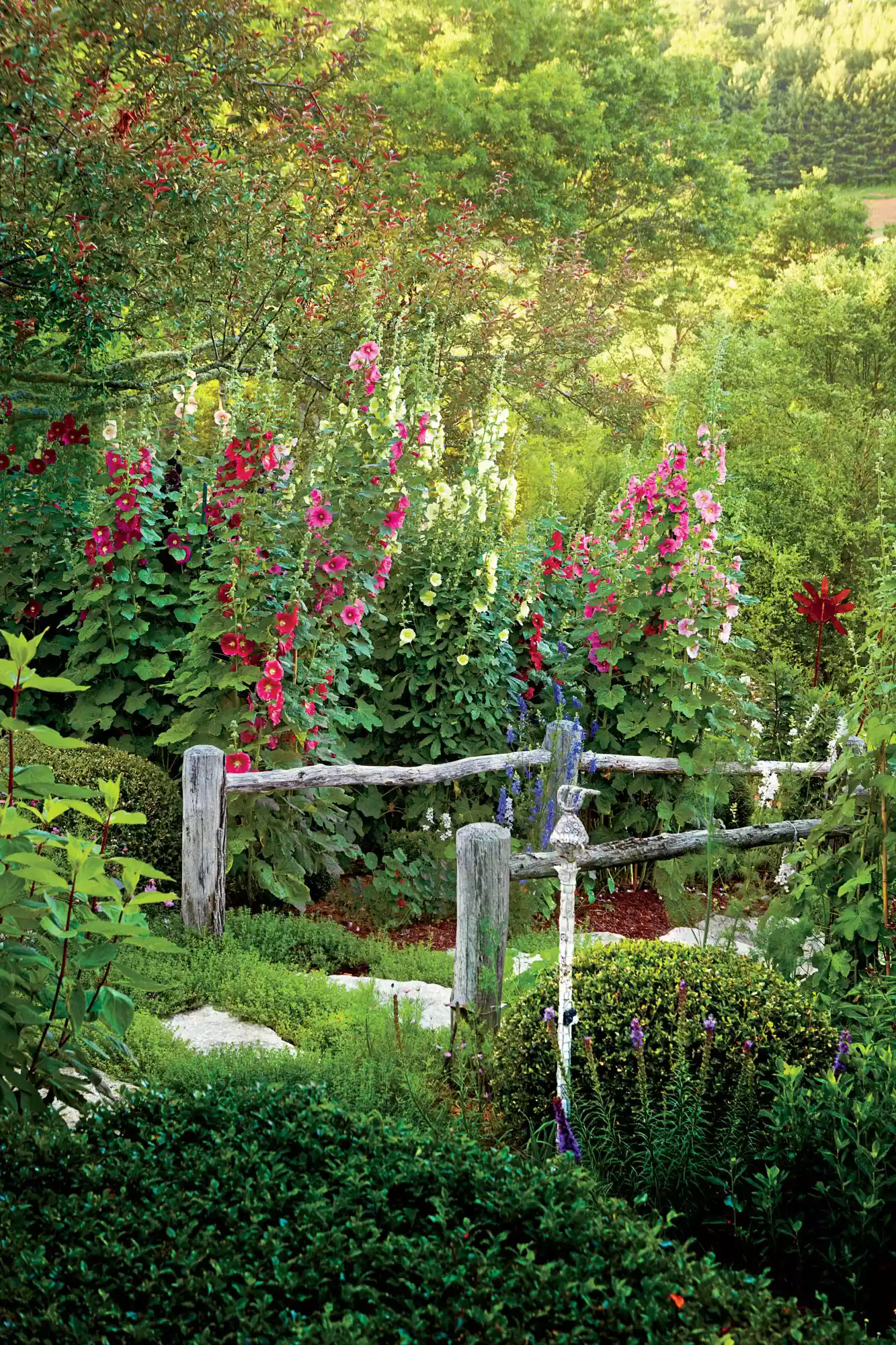
- Botanical Name: Alcea rosea
- Sun Exposure: Full Sun to Part Shade
- Soil Type: Well-draining, Rich
- Soil pH: Slightly Acidic to Slightly Alkaline (6.0-8.0)
Hollyhocks are a quintessential cottage garden plant. Because of their height, they are usually planted toward the back of flower gardens, often along a fence. Hollyhocks typically grow as biennials, producing foliage in their first season and flowering in their second year. However, they reseed readily in the garden. By sowing seeds in two consecutive years, you can have a stand that blooms every year.
Fountain Grass
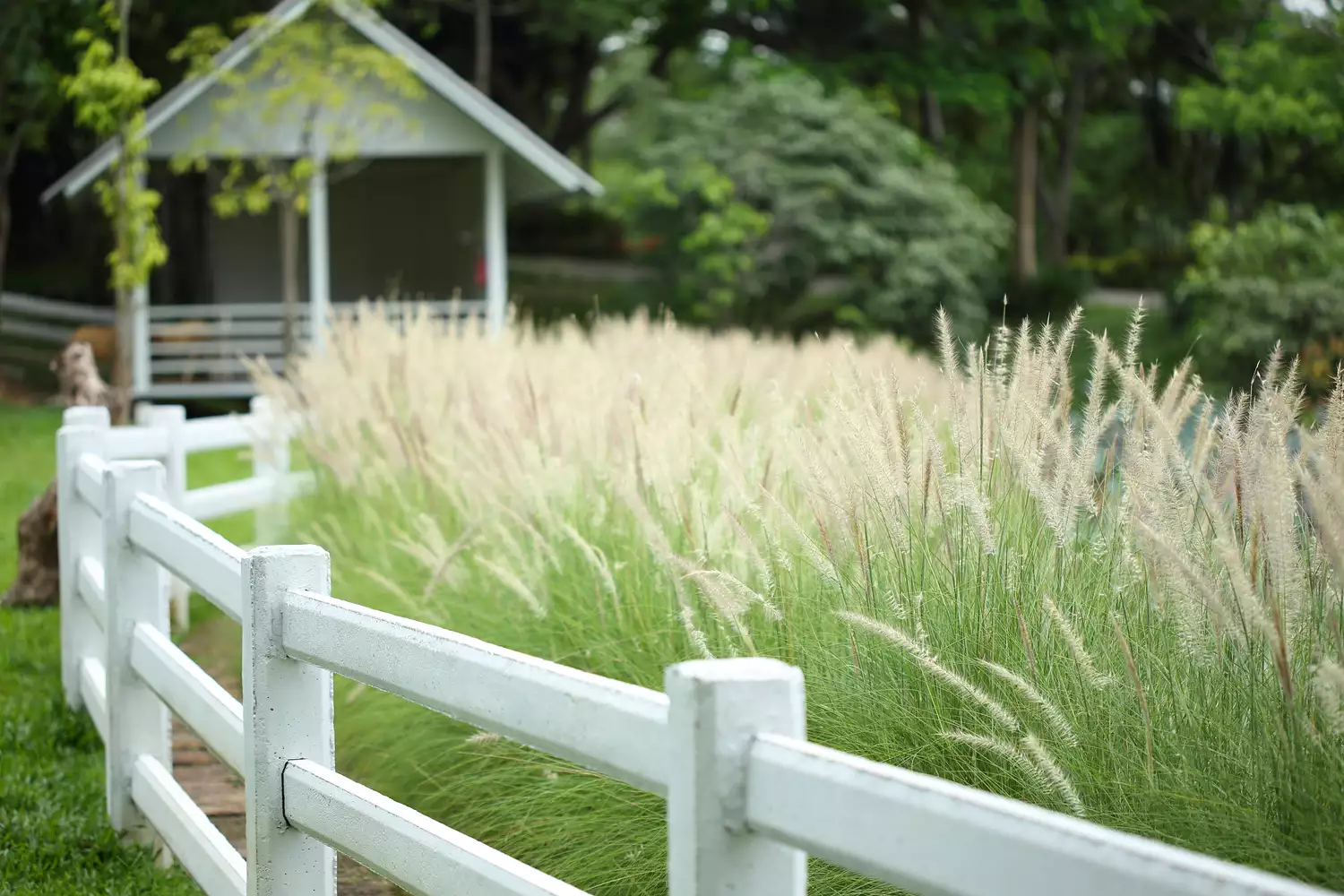
- Botanical Name: Pennisetum alopecuroides
- Sun Exposure: Full Sun to Part Shade
- Soil Type: Moist, Well-draining
- Soil pH: Slightly Acidic to Neutral (6.0-7.0)
Nothing adds texture to a garden like ornamental grasses. Solid fences provide a backdrop to the fine, arching foliage and soft feathery blooms of fountain grass. For planting against white fences, the closely related purple fountain grass, Pennisetum setaceum ‘Rubrum’, makes a great alternative, though it is not winter hardy. Grasses also look lovely swaying along picket fences.
Clematis

- Botanical Name: Clematis species
- Sun Exposure: Full Sun
- Soil Type: Moist, Well-draining
- Soil pH: Neutral to Slightly Alkaline (6.5-7.5)
Clematis climbs by wrapping its leaf stems around support structures. Because these stems are relatively short, clematis may need to be tied or secured to fences. You can also add a fishing line or wire for plants to climb. Clematis prefers to have its head in the sun and its feet in the shade, which makes it great for planting between a fence and other plant material that will shade its base.
Foxglove
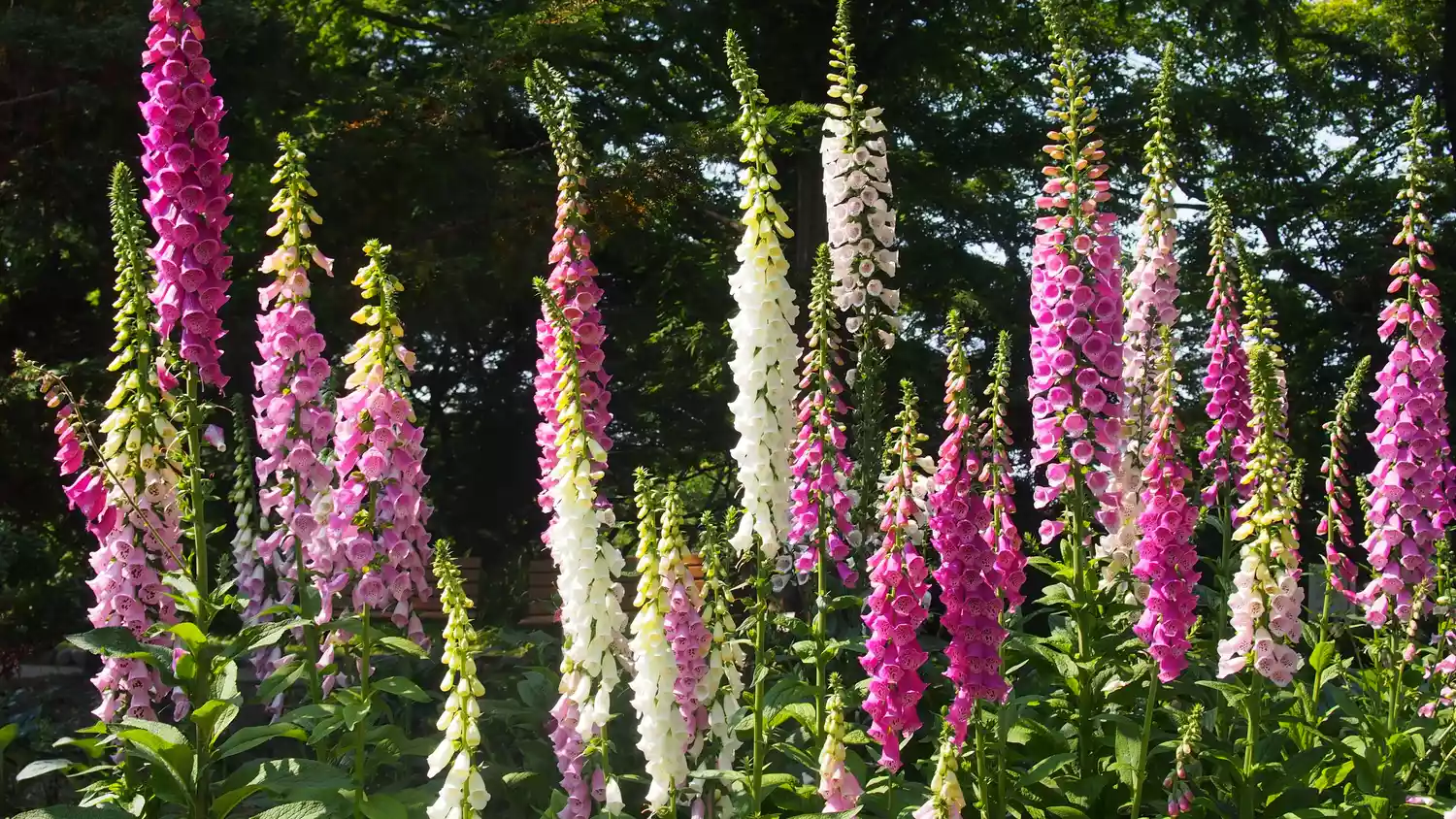
- Botanical Name: Digitalis purpurea
- Sun Exposure: Part Shade to Full Sun
- Soil Type: Moist, Well-draining, Rich
- Soil pH: Acidic to Slightly Acidic (5.5-6.5)
Foxgloves add vertical dimension to the garden with stunning floral spikes. Though plants tolerate full sun, they perform best with afternoon shade. Foxglove is a biennial or short-live perennial, producing a basal rosette of foliage in their first growing season and flowering in the subsequent year(s). Foxglove will readily reseed for long-lasting stands in the garden.
Abelia
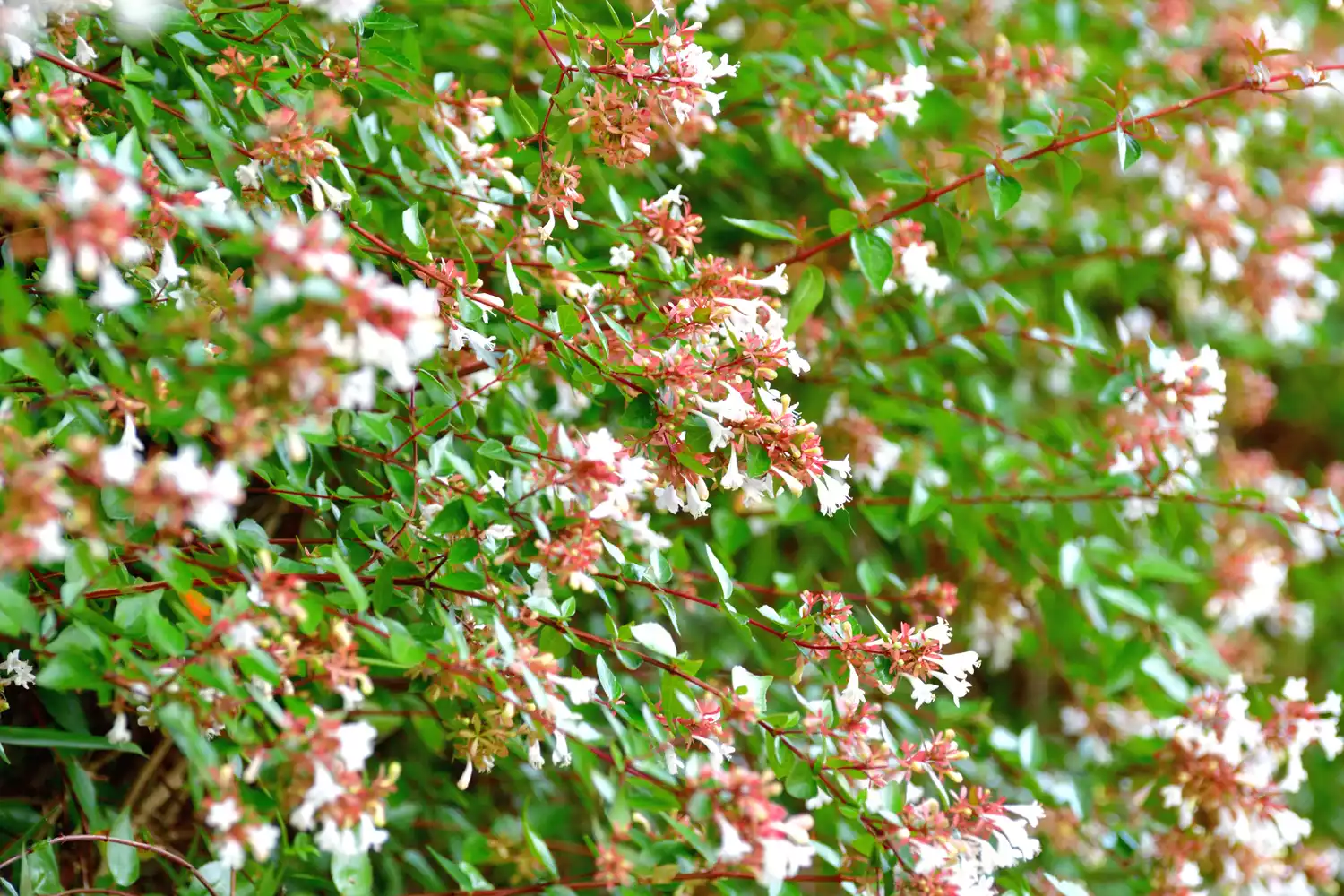
- Botanical Name: Linnaea (Abelia) x grandiflora
- Sun Exposure: Full Sun to Partial Shade
- Soil Type: Well-draining, Rich
- Soil pH: Acidic to Alkaline (5.0-8.0)
Solid fences call for a different planting strategy. Evergreen and semi-evergreen shrubs, like abelia, along with deciduous perennials, grasses, and shrubs provide lasting color and structure. Many varieties of abelia are available, providing stunning combinations for any style of fence. Fragrant blooms throughout the growing season attract bees, butterflies, and hummingbirds.
Rose of Sharon
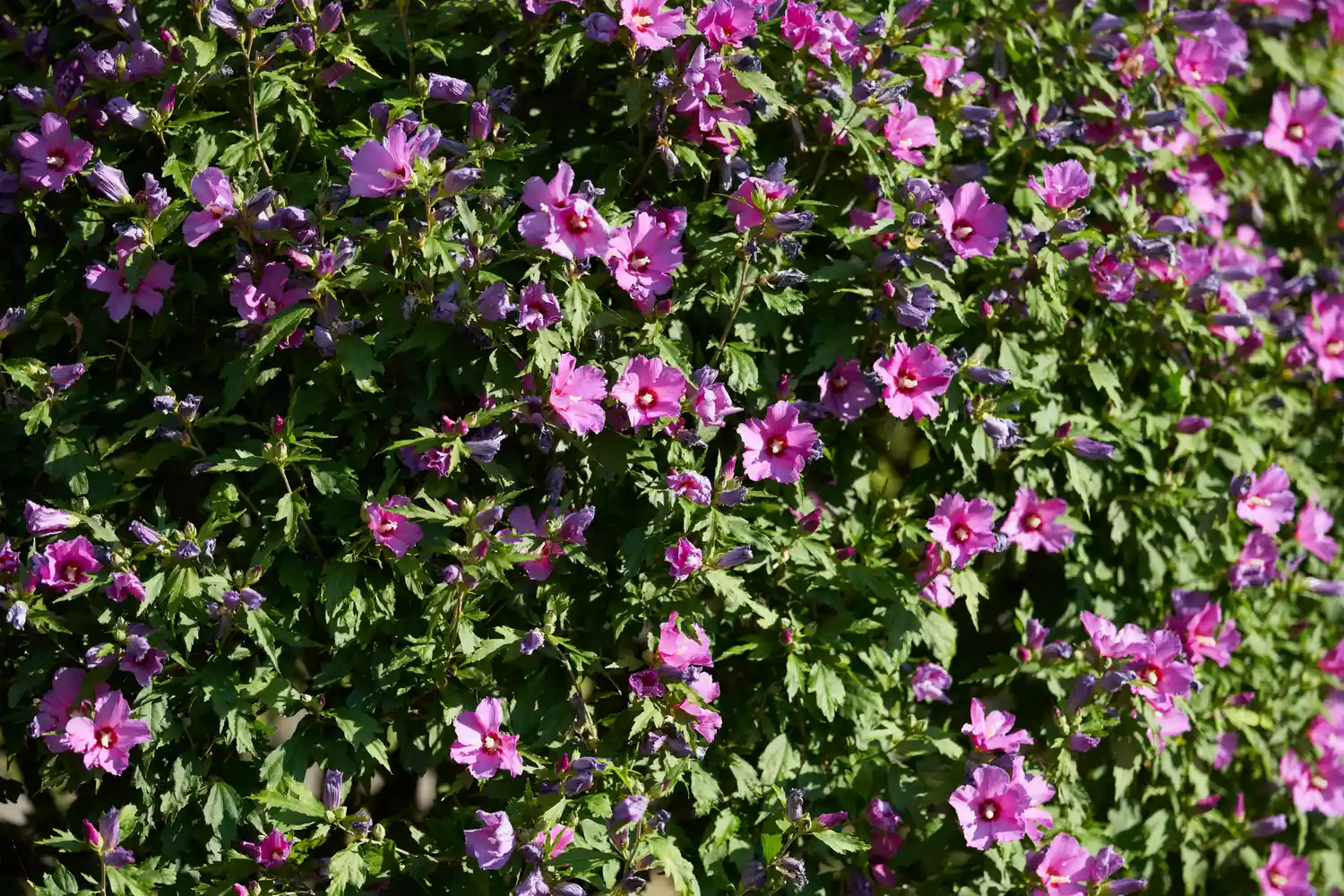
- Botanical Name: Hibiscus syriacus
- Sun Exposure: Full Sun
- Soil Type: Moist, Well-draining, Rich
- Soil pH: Acidic to Slightly Alkaline (5.5-7.5)
Rose of Sharon adds cottage charm to any fence line, whether peeking over the top of a solid wall or pocking through wooden slats. Plants are easy to grow and widely adaptable to a variety of growing conditions. Sterile cultivars are available for gardeners worried about self-sowing, including some gorgeous double-bloom varieties.
Spider Flower
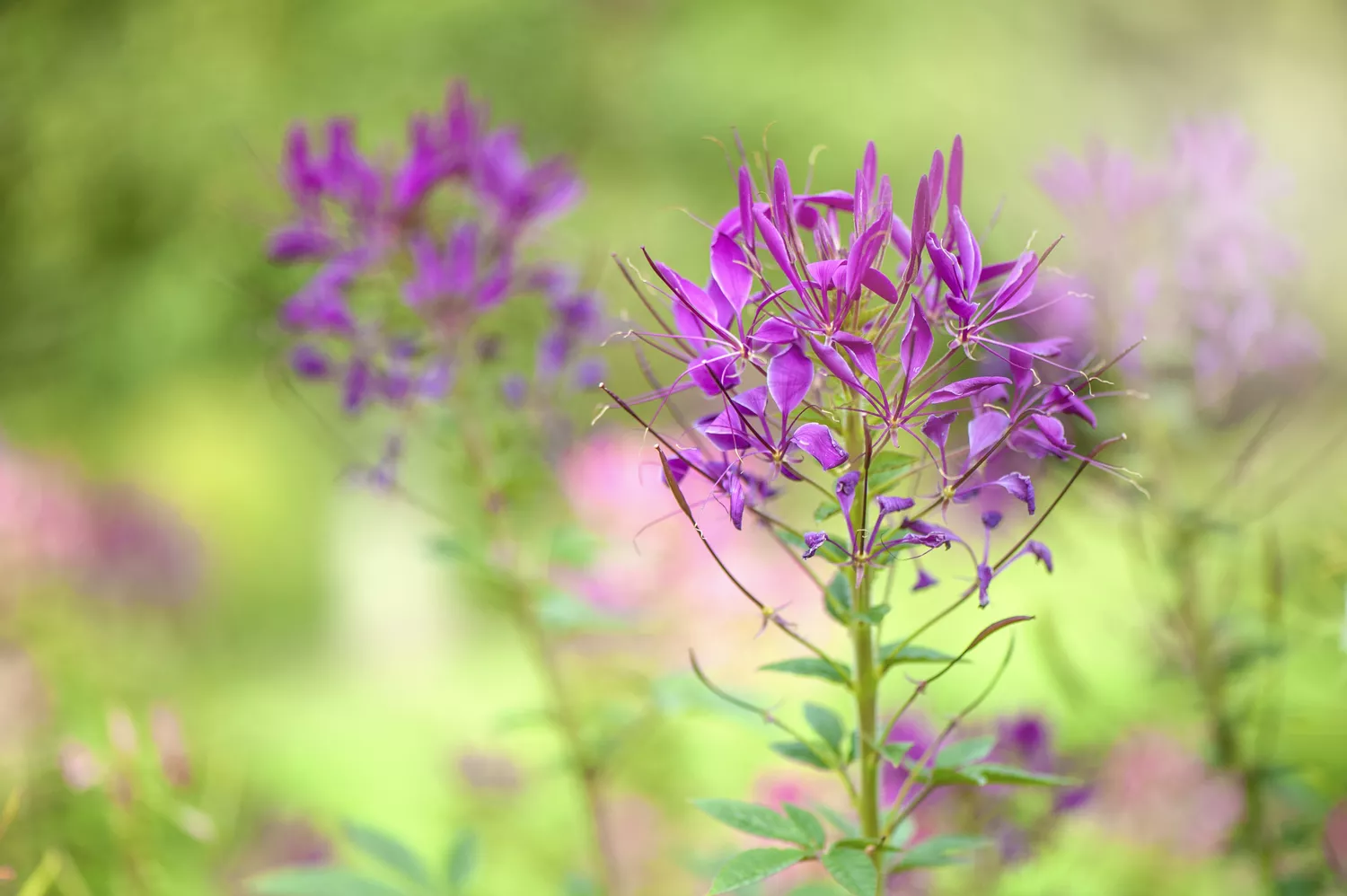
- Botanical Name: Cleome
- Sun Exposure: Full to Part Sun
- Soil Type: Moist, Well-draining
- Soil pH: Slightly Acidic to Neutral (6.0-7.0)
This long-blooming annual flowers early summer through fall, producing eye-catching, pink, white, or lavender blooms. Plants can reach 4 to 6 feet tall, working well against the fence. If desired, you can pinch plants back in early summer to encourage a bushier habit. Plants readily self-seed, returning year after year.
Azalea
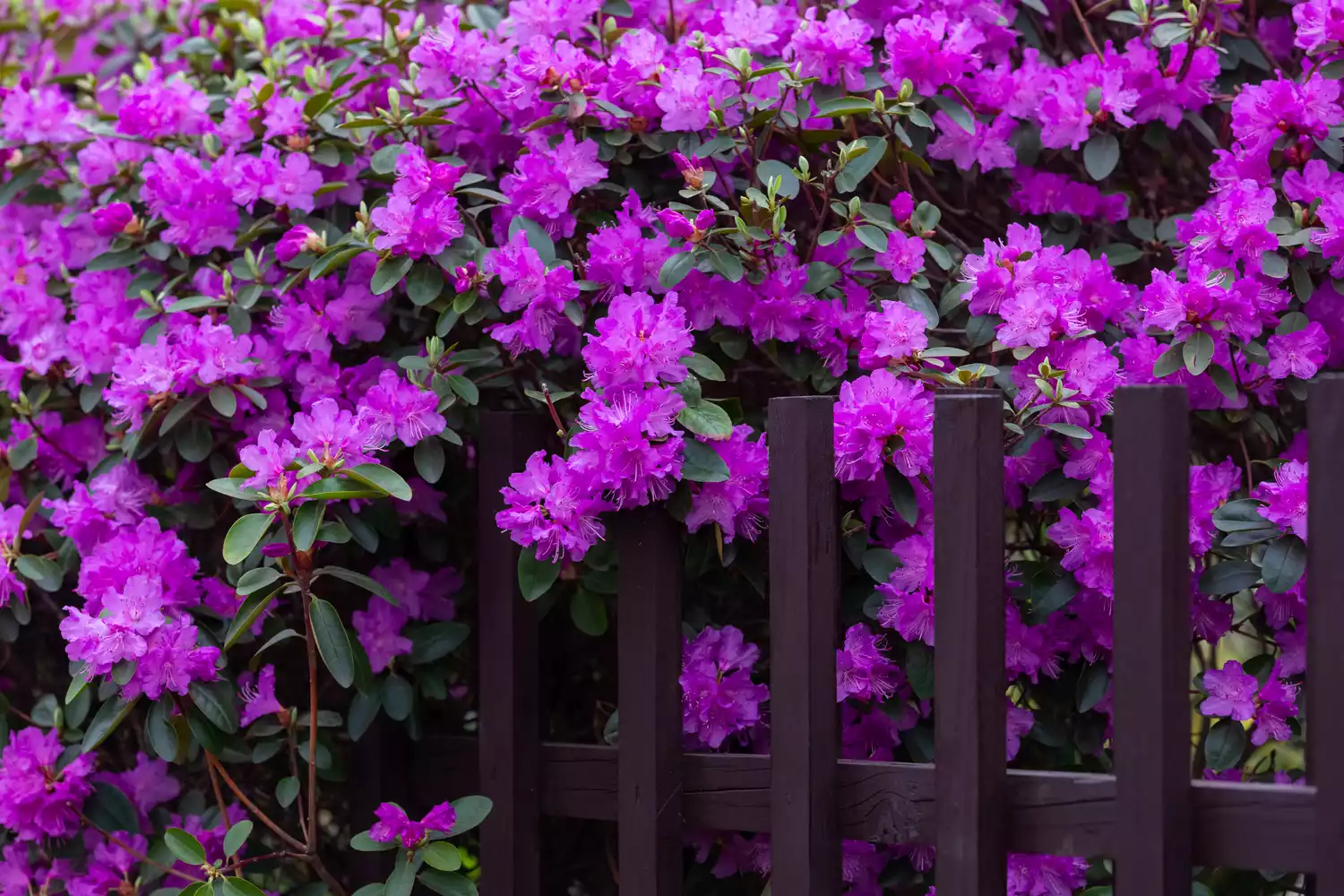
- Botanical Name: Rhododendron hybrids
- Sun Exposure: Partial Shade
- Soil Type: Moist, Well-draining, Rich
- Soil pH: Acidic (4.5-6.0)
Shady fence lines and wrought iron rails call for the elegant touch of azaleas. The vibrant blooms of these beauties accentuate any garden, from rustic woodland gardens to formal entryways. They bloom in shades of purple, pink, white, and red as the spring garden awakens. Azaleas are available in a variety of sizes, and some are reblooming.
Coral Honeysuckle
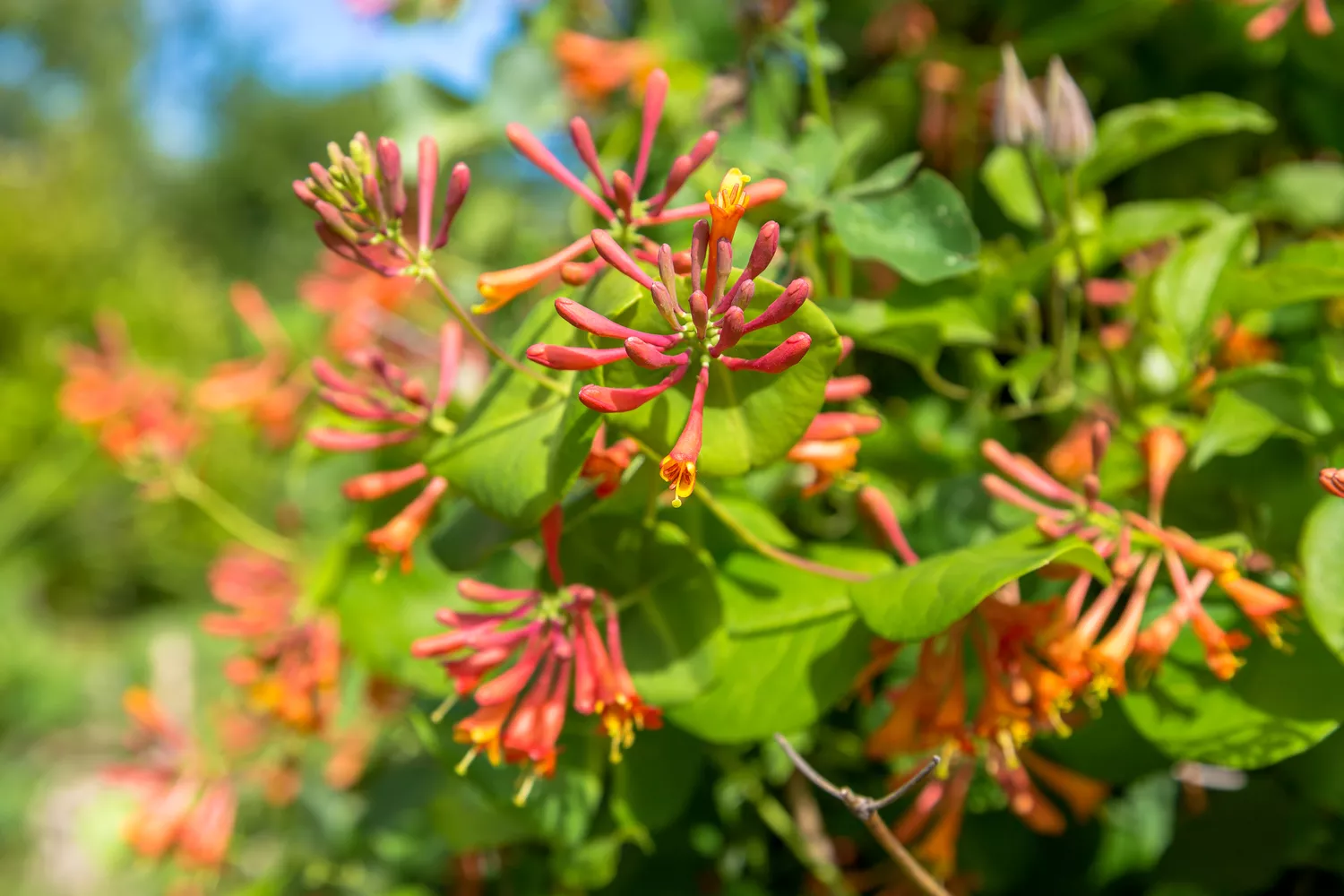
- Botanical Name: Lonicera sempervirens
- Sun Exposure: Full Sun
- Soil Type: Average, Well-draining
- Soil pH: Acidic to Slightly Alkaline (5.5-8.0)
This native twining vine is a great scrambler for fence rows. Unlike exotic honeysuckles, this lovable vine is not invasive. It will delight you with tubular coral-red blooms that emerge in a spring flush followed by sporadic blooms throughout the season. Watch for hummingbirds sipping from the flowers and songbirds nibbling on the small berries.
Cosmos
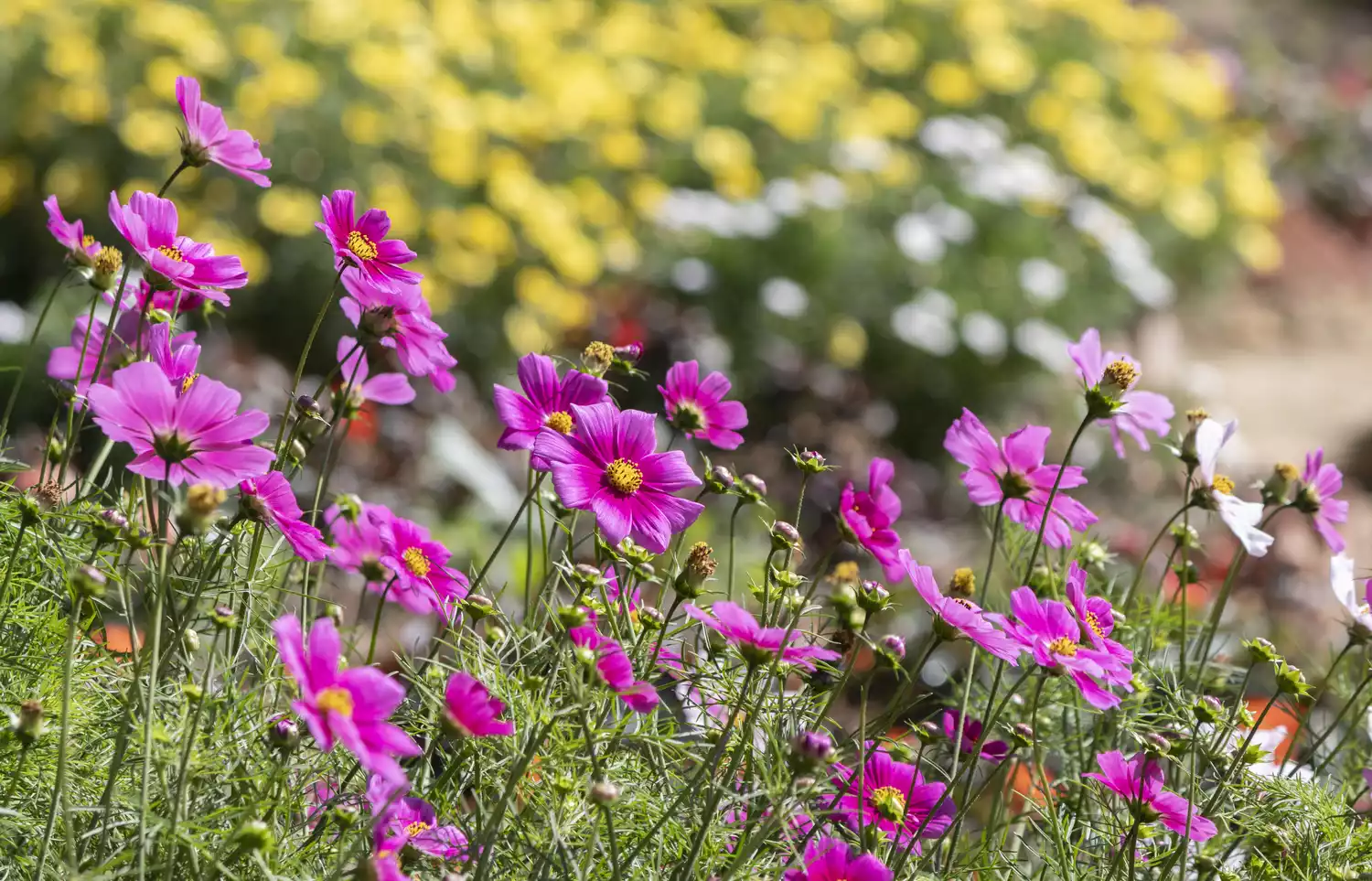
- Botanical Name: Cosmos bipinnatus
- Sun Exposure: Full Sun
- Soil Type: Average, Well-draining
- Soil pH: Neutral to Slightly Alkaline (6.5-8.0)
Cosmos soften fence lines with their airy foliage and long-lasting blooms. A cottage garden staple, they look stunning planted en masse or used as tucks between other flowers. A true annual, cosmos commonly self-sow in the garden. Plants may benefit from cutting back to a height of 12 to 18 inches after the first flush of flowers if they have an abundance of seed heads. Let seed heads fall to the soil if you wish to promote a self-sustaining stand.
Black-Eyed Susan
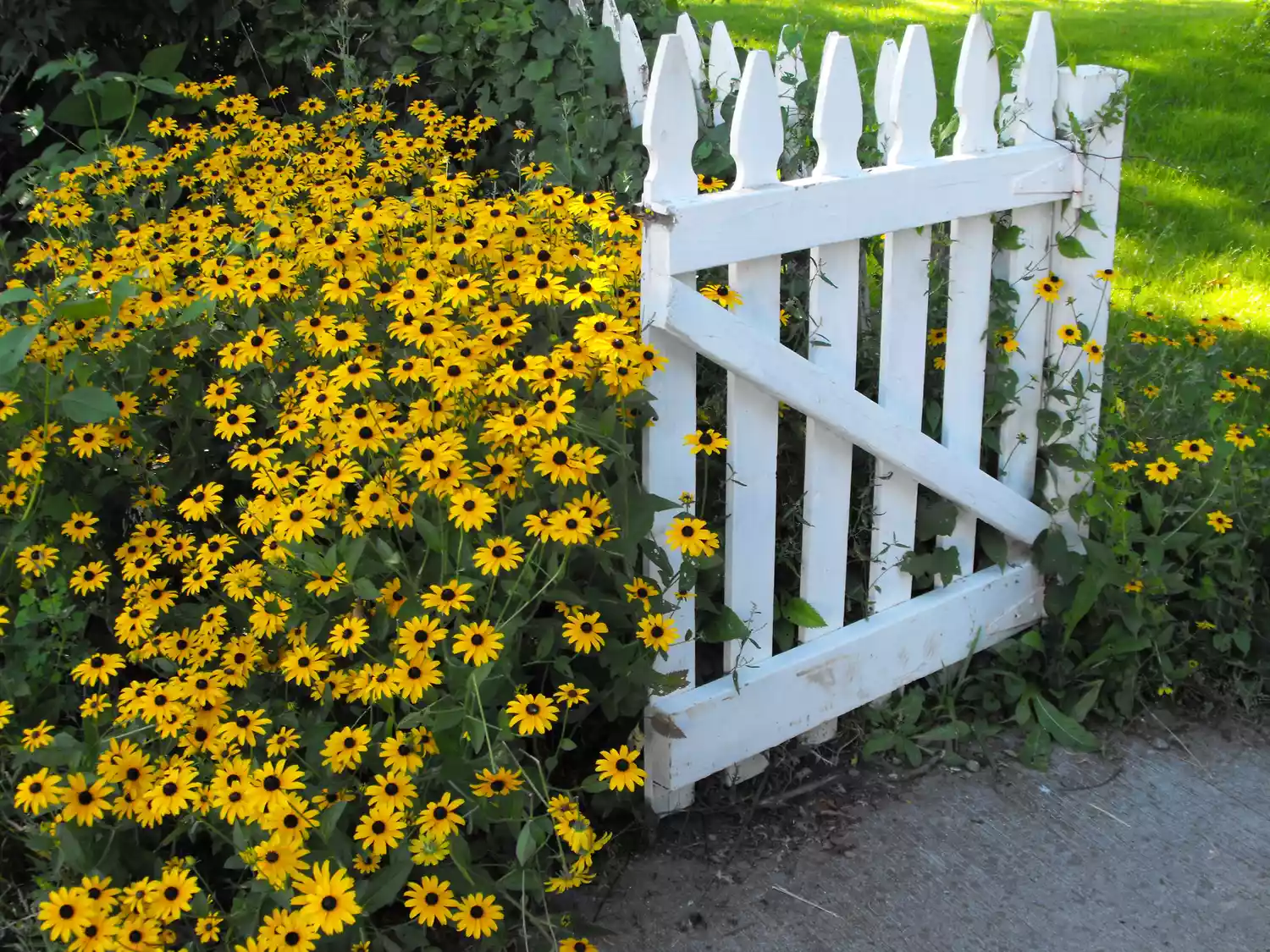
- Botanical Name: Rudbeckia hirta
- Sun Exposure: Full Sun
- Soil Type: Medium, Well-draining, Rich
- Soil pH: Acidic (5.5-6.8)
Blooming for months on end, this easy to grow biennial is a beacon for butterflies in the summer garden. Finches and other seed-feeding songbirds are drawn to the late-season seed heads. Considered a biennial or short-lived perennial, black-eyed Susan blooms in its first season after planting and is often grown as an annual. It also self-seeds in the garden to keep your fence line looking fabulous.
Asparagus
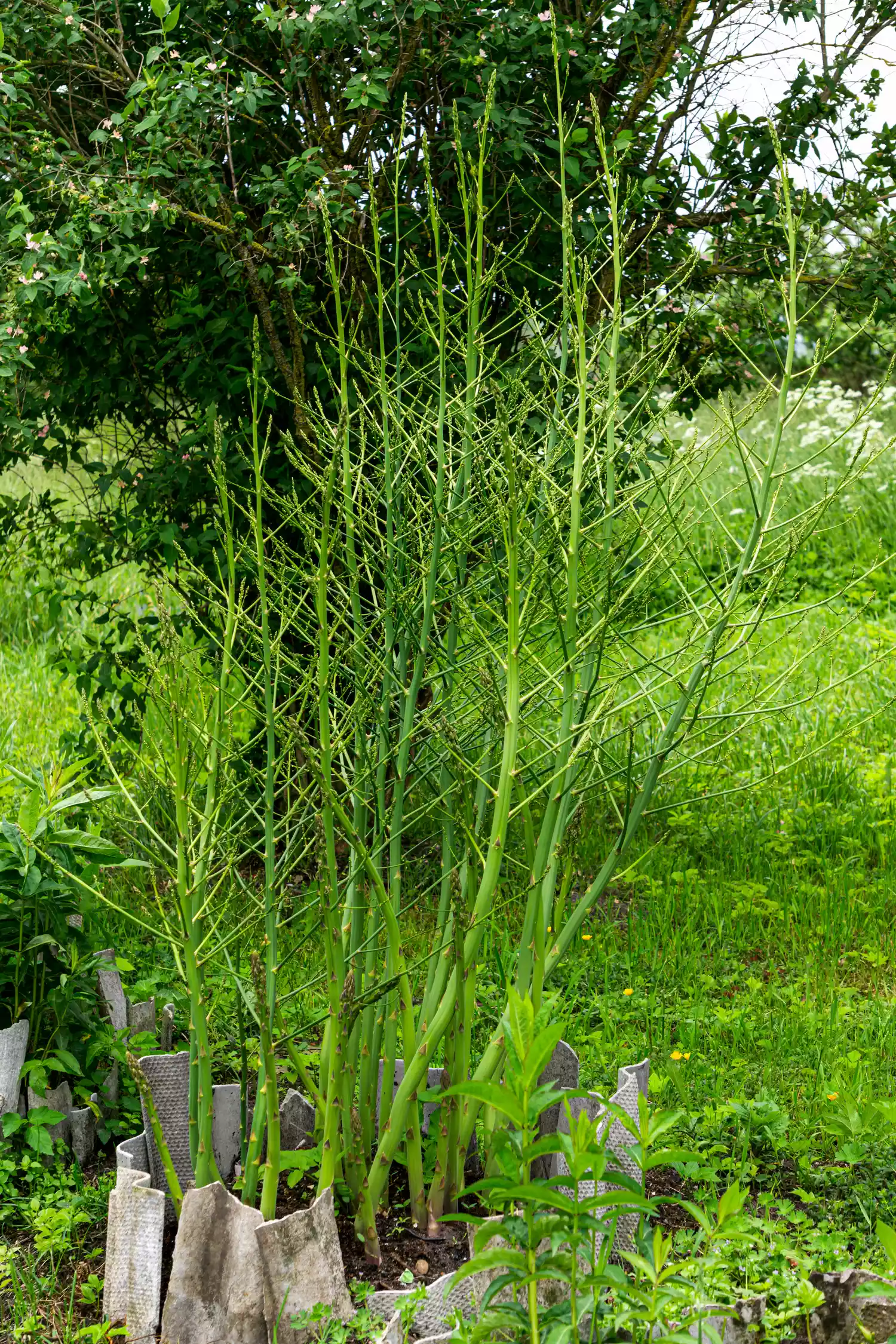
- Botanical Name: Asparagus officinalis
- Sun Exposure: Full Sun
- Soil Type: Well-draining, Rich
- Soil pH: Neutral to Slightly Alkaline (6.5-7.5)
Why not grow something edible along your fence row? Asparagus is a perennial crop, making it an ideal plant for mixed garden beds. After an early season harvest, plants produce delicate fern-like foliage soaring to heights of three to five feet that looks stunning in the back of flower gardens.


